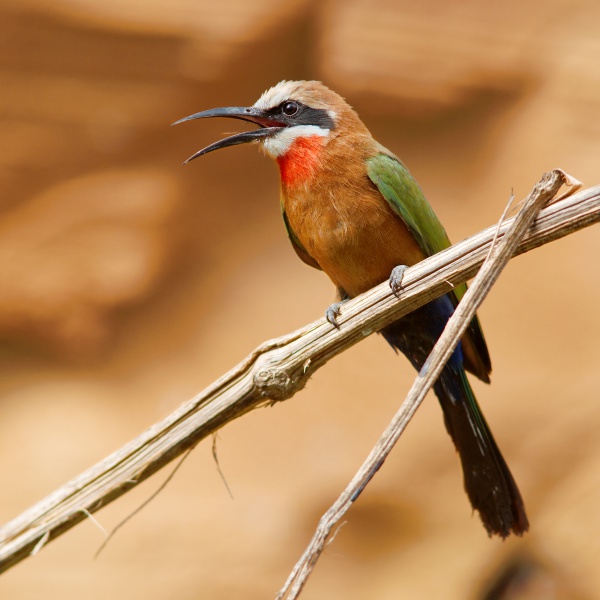Facts About White-fronted bee-eater
The white-fronted bee-eater is a vibrant and intriguing bird native to sub-equatorial Africa. Easily identifiable, these birds boast white foreheads, square tails, and vivid red throat patches. They typically nest in colonies, excavating burrows in cliffs or earthen banks to create their homes. Often seen perched in low trees, they adeptly catch insects either in mid-flight or by briefly hovering.
Measuring approximately 23 cm, these slender birds display a striking palette of colors. They feature green upperparts, cinnamon underparts, and a distinctive black mask. Their call, a deep squeak, is quite recognizable. White-fronted bee-eaters are commonly found in savannah regions, particularly near gullies where bees, their primary food source, are plentiful.
One of the most fascinating aspects of these birds is their social behavior. They live in colonies of around 200 individuals and exhibit complex family-based social systems. These extended family groups, known as clans, practice cooperative breeding, with members assisting each other in raising the young. This includes tasks such as feeding the chicks and defending the nest.
However, female bee-eaters face certain challenges. When they leave their nesting burrows, they may attract unwanted attention from unmated males that attempt to force them to the ground and mate. Despite these challenges, the birds maintain a diet primarily consisting of bees, though they will also catch other flying insects when available. Their hunting methods include quick hawking flights and gliding down from perches to capture their prey.

 Cameroon
Cameroon